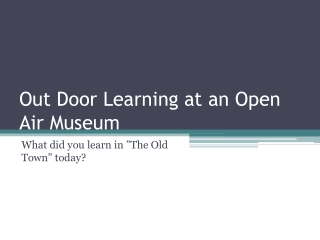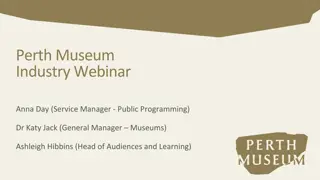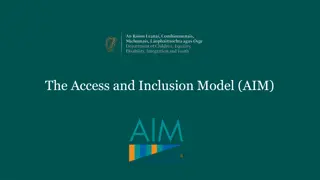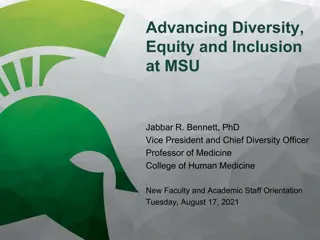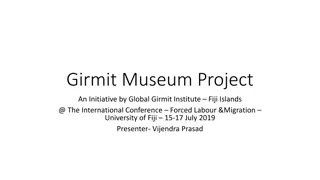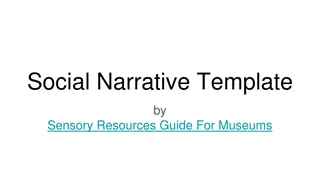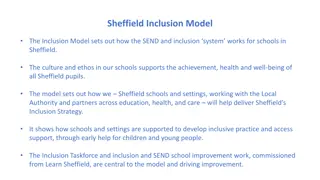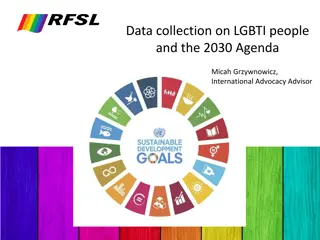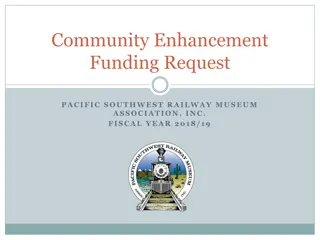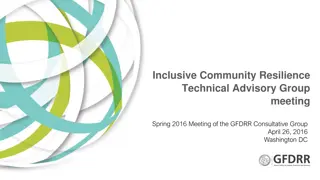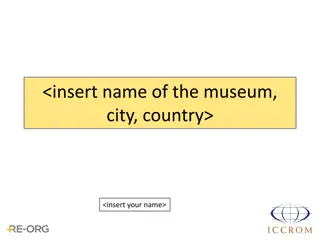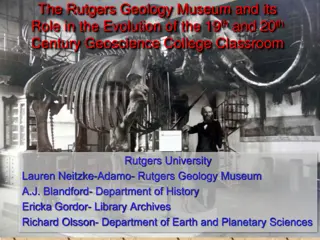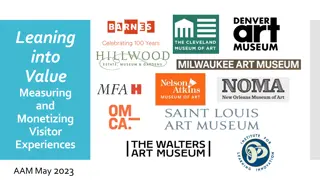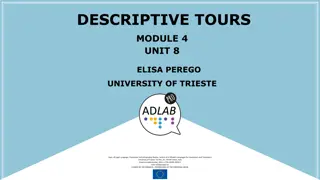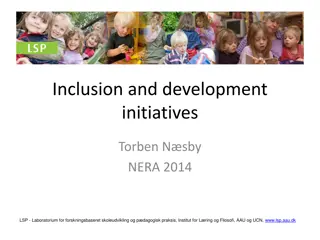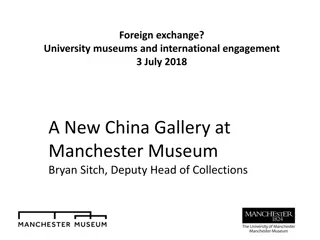
Exploring Multi-Sensory Exhibition Strategies in Canadian Contemporary Art Institutions
Discover the research by Ellen Belshaw on multi-sensory exhibition strategies in Canadian contemporary art institutions, challenging ocularcentrism and promoting inclusivity through non-ocularcentric art forms. Explore motivations, barriers, and potential improvements for a more sensorial art experience.
Download Presentation

Please find below an Image/Link to download the presentation.
The content on the website is provided AS IS for your information and personal use only. It may not be sold, licensed, or shared on other websites without obtaining consent from the author. If you encounter any issues during the download, it is possible that the publisher has removed the file from their server.
You are allowed to download the files provided on this website for personal or commercial use, subject to the condition that they are used lawfully. All files are the property of their respective owners.
The content on the website is provided AS IS for your information and personal use only. It may not be sold, licensed, or shared on other websites without obtaining consent from the author.
E N D
Presentation Transcript
Sensorial Inclusion: Multi-sensory exhibition strategies at institutions of contemporary art in Canada ellen belshaw they/them MISt, McGill University Inclusive Museum Conference, April 2022
Territorial Acknowledgement I would like to acknowledge that McGill University is located on unceded Indigenous lands. The Kanien keh :ka Nation is recognized as the custodians of the lands and waters where the physical university stands. Tiohti :ke, which many know by the name of Montr al, is historically known as a gathering place for many First Nations. Today, it is home to a diverse population of Indigenous and other peoples. We respect the continued connections with the past, present, and future in our ongoing relationships with Indigenous and other peoples within the Tiohti :ke community. http://native-land.ca/ | https://www.irsss.ca/
Outline Introduction Definitions Research questions Research parameters Major findings Implications & future research potential
Ocularcentrism Reliance on vision above other senses Term coined by Martin Jay in 1988 with his paper The Rise of Hermeneutics and the Crisis of Ocularcentrism Non-ocularcentric art Art forms that do not ascribe to the sensorial hierarchy of sight above others Examples may include: sound art, performance art, installation art, interactive art, etc
Research Questions To what extent are institutions motivated to exhibit non-ocularcentric or multi-sensory art? Where does the motivation come from? What can be done to improve the exhibitions strategies of non-ocularcentric art at contemporary art institutions in Canada? What barriers or constraints are professionals facing? What related issues are professionals working towards that could be helped by more non-ocularcentric art in exhibitions?
Research Parameters Scope Contemporary art Public institutions in Canada Exhibiting institutions Participants 18 anonymous questionnaire responses 7 semi-structured interviews (45-60mins each, anonymized) Ongoing informed consent
Major Findings 1 While some terms are already available and in use, there is a lack of consensus on the language used to discuss non-ocularcentric experiences in exhibitions Three distinct categories of non-ocularcentric experiences emerged through the research Non-ocularcentric art Non-ocularcentric experiences Alternative programming While the three categories have some distinct motivations and barriers, there were a number of motivations and barriers shared across all categories 2 3
Categories of non- ocularcentric Art Experiences a. Non-ocularcentric art Fully integrated in exhibitions Included ephemerally in exhibitions b. Non-ocularcentric exhibitions Built-in exhibition components Added-on exhibition components c. Alternative programming
a. Non-ocularcentric Art Generally refers to art that is intrinsically not prioritizing sight, or that employs other senses to be experienced as intended by the artist Time-based art, ephemeral art, or art heavily focused on other senses Fully integrated in exhibitions Presented in similar spaces as art intended to be experienced ocularly Included ephemerally in exhibitions Same types of art but added-on to exhibitions, often as promotional or educational events, or at exhibition openings Examples mentioned: Rirkrit Tiravanija, Janet Cardiff, Salima Punjami
b. Non-ocularcentric Exhibitions The art may be ocularcentric, but a point has been made to make the exhibition experience non-ocularcentric Available to all exhibition visitors Built-in exhibition components Integrated into exhibitions Ie. Tactile/interactive rooms mimicking an artist s style Added-on exhibition components Can be added or changed without major changes to the exhibition Ie. Audio guides, sensory/tactile boards, in-person guided tours Examples mentioned: Paul Klee exhibition at the National Gallery of Canada (#PlayinKlee)
c. Alternative Programming Only available to specific visitors, at specific times or contexts Ie. Controlled touch tours available only for blind or partially sighted visitors one day/month, educational programming for student groups, etc Example mentioned: Stimulating the Senses tour formerly offered at the National Gallery of Canada
Implications of Ocularcentrism Recognizing ocularcentrism could lead to improved representation Possibilities for improved equitable representation of a more diverse range of artists for non-ocularcentric art in exhibitions Possibilities for improved structures for alternative programming to benefit a range of visitor needs
Implications of Creating Categories More vocabulary options can lead to improved communication Having precise terms aids communication Non-ocularcentric art is often conflated with providing access Improved communication could positively affect funding requests
Future Research Include educational staff in future studies Returning categories to participants for discussions about more precise issues More research on the relationship between artist demographics and non-ocularcentric art
In summary Importance of thinking critically about ocularcentrism in cultural heritage institutions General understanding of the different categories of non-ocularcentric experiences and some of the terminology The broader implications of who is affected by ocularcentric exhibition strategies
Thank you! References Candlin, Fiona. Rehabilitating unauthorised touch or why museum visitors touch the exhibits. The Senses and Society, 12, 3 (2017), 251-266. https://doi.org/10.1080/17458927.2017.1367485 Clintberg, Mark. Where Publics May Touch: Stimulating Sensory Access at the National Gallery of Canada. The Senses and Society, 9:3 (2014): 310-322, https://doi.org/10.2752/174589314X14023847039755 Dymond, Anne. Diversity Counts: Gender, Race and Representation in Canadian Art Galleries. Kingston/Montreal: McGill-Queen s University Press, 2019. Jay, Martin. The Rise of Hermeneutics and the Crisis of Ocularcentrism. Poetics Today 9, 2 (1988): 307-326. https://doi.org/10.2307/1772691 Downcast Eyes: The Denigration of Vision in Twentieth-Century French Thought. First edition. Berkeley, California: University of California Press, 1993. Howes, David. Introduction to Sensory Museology. The Senses and Society 9, 3 (2014): 259-267. https://doi.org/10.2752/174589314X14023847039917 Contact: ellen.belshaw@mail.mcgill.ca www.ellenbelshaw.com Twitter @ellen_belshaw | Instagram @lllllllllll.n |www.linkedin.com/in/ellen-belshaw/

